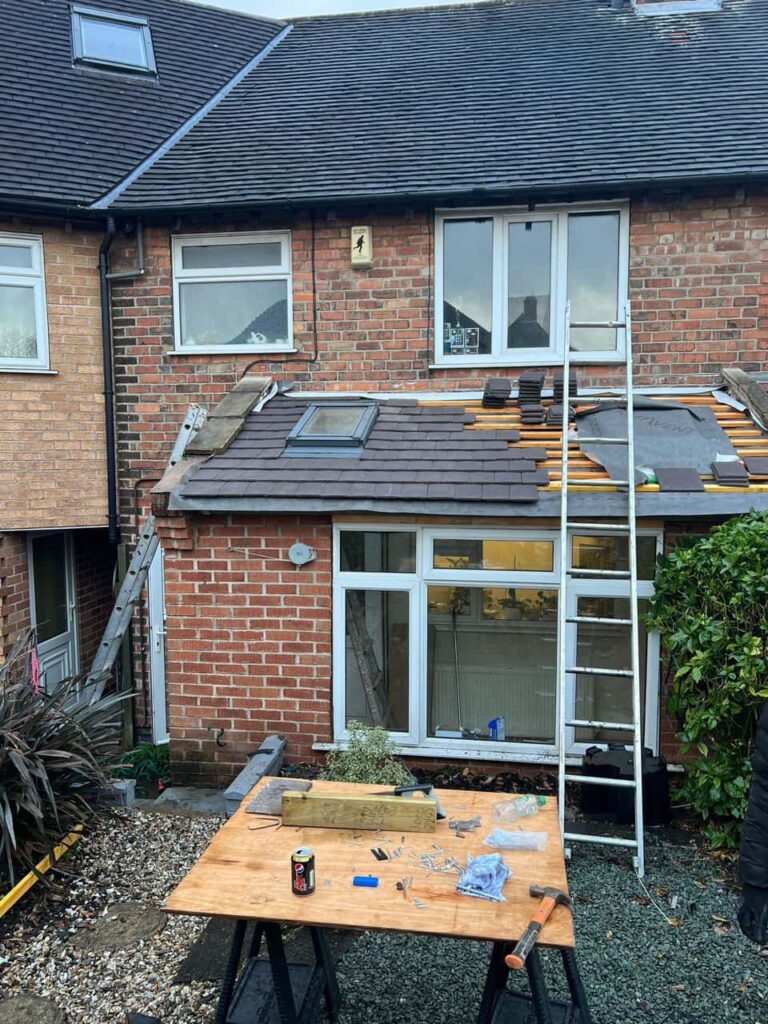Older pitched roofs are often a defining feature of traditional homes, adding charm and character to the property. However, as these roofs age, they may begin to show signs of wear and tear, leading to structural issues that require attention. At MCM Roofing Repairs Salisbury, we understand the unique challenges that come with maintaining older roofs, particularly in Salisbury, Wiltshire, where many homes boast historic features. In this blog post, we’ll discuss how to identify and address structural problems in older pitched roofs, ensuring their longevity and safety.
1. Recognising the Signs of Structural Damage
Older roofs can develop a range of structural issues over time, often due to the natural ageing of materials, exposure to the elements, or poor maintenance. Common signs that your pitched roof may have structural issues include:
- Sagging or Dipping: A clear indication that the roof’s support structures may be compromised.
- Cracked or Missing Tiles: These can lead to leaks and further damage to the roof’s structure.
- Water Stains or Dampness in the Attic: A sign that water is penetrating the roof and affecting the internal framework.
- Visible Rot or Decay in Wooden Beams: This can weaken the overall integrity of the roof.
- Bowed Rafters: Indicating that the internal supports may be struggling to bear the weight of the roof.
If you notice any of these signs, it’s important to seek professional advice from a roofing expert to assess the extent of the damage.
2. Reinforcing Roof Support Structures
One of the most common issues in older pitched roofs is the weakening of the internal support structures. Over time, wooden rafters and beams may become compromised due to rot, insect infestation, or long-term exposure to moisture. To address this, roofers may need to reinforce the roof’s framework by:
- Replacing damaged rafters or beams: This ensures that the roof can continue to bear the load without risk of collapse.
- Installing additional supports: For example, cross-bracing or new struts can help redistribute weight more effectively across the roof.
- Repairing or treating wood: Applying treatments to prevent further rot or insect damage can protect the remaining wooden elements.
Reinforcing the roof structure is crucial to maintaining its integrity and ensuring that it can support the tiles, insulation, and other materials without issue.
3. Addressing Leaks and Water Damage
Leaks are a common problem in older pitched roofs, especially where tiles have cracked or shifted over time. Left unaddressed, leaks can cause extensive water damage to both the roof structure and the interior of your home. To tackle water damage effectively:
- Replace damaged tiles: Broken or missing tiles should be replaced as soon as possible to prevent further water ingress.
- Check flashing: Metal flashing around chimneys, skylights, or vents can deteriorate, allowing water to enter. Replacing or repairing flashing is often necessary in older roofs.
- Inspect the underlayment: The protective layer beneath the tiles may need to be replaced if it has become worn or damaged.
Regular maintenance and timely repairs are key to preventing leaks from causing more significant structural issues.
4. Improving Ventilation
Older roofs often lack adequate ventilation, which can lead to a build-up of heat and moisture in the attic space. This can accelerate the decay of wooden beams and contribute to mould growth. Improving ventilation in your pitched roof involves:
- Installing vents: Ridge or soffit vents can help regulate airflow and reduce moisture levels in the attic.
- Clearing existing vents: Ensure that any existing ventilation is free from blockages that may reduce its effectiveness.
Proper ventilation helps extend the life of your roof by reducing the risk of moisture-related damage.
5. Replacing Failing Materials
As roofing materials age, they naturally degrade and lose their effectiveness. In some cases, the best solution for an older pitched roof is to replace worn-out materials. This may involve:
- Re-roofing: Replacing the roof’s tiles or slates with new materials that are more durable and weather-resistant.
- Upgrading insulation: Older roofs often have insufficient insulation, which can lead to heat loss and higher energy bills. Replacing or adding insulation can improve your home’s energy efficiency.
Replacing materials not only enhances the roof’s structural integrity but also improves its appearance and performance.
Conclusion
Maintaining the structural integrity of older pitched roofs requires regular inspections, timely repairs, and, in some cases, significant reinforcement. At MCM Roofing Repairs Salisbury, we offer expert services to assess and address structural issues in older roofs, helping homeowners in Salisbury, Wiltshire, protect their properties from long-term damage. If your roof is showing signs of wear, contact us today to schedule an inspection and let us help you preserve the beauty and safety of your home.
Call us on: 01722 548 992
Click here to find out more about MCM Roofing Repairs Salisbury
Click here to complete our contact form and see how we can help with your Roofing needs.

